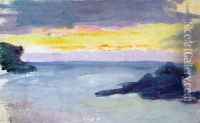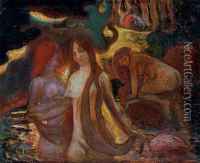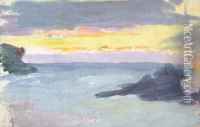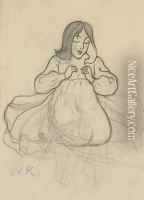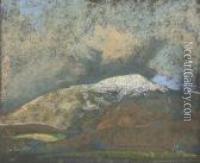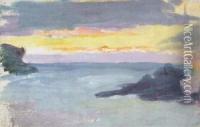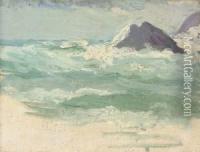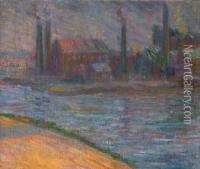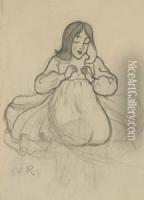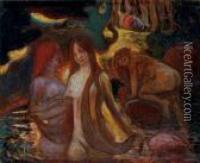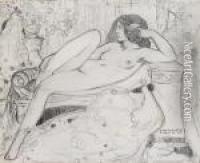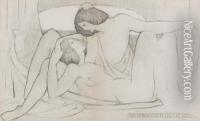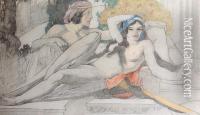Eric Forbes-Robertson Paintings
Eric Forbes-Robertson (1865–1935) was a distinguished British painter and a member of the notable Forbes-Robertson theatrical family. His artistic journey began at the prestigious Royal Academy Schools in London, where he honed his skills and developed a passion for classical and historical subjects, which would become prominent themes in his later works. Beyond the Royal Academy, Forbes-Robertson sought further inspiration and expertise on the continent, studying under influential figures in the Parisian art scene. This exposure not only broadened his technical abilities but also enriched his artistic sensibility, blending traditional British art forms with the innovative trends of French painting.
Throughout his career, Forbes-Robertson was celebrated for his portraiture and historical paintings. His works were characterized by a depth of emotion and a meticulous attention to detail, qualities that garnered him critical acclaim and a loyal following. He exhibited regularly at major galleries, including the Royal Academy of Arts in London, securing his reputation within the British art establishment. Beyond his achievements in the visual arts, Eric Forbes-Robertson was deeply intertwined with the world of theatre through his family, which included the famous actress Dame Johnston Forbes-Robertson. This connection enriched his artistic perspective, infusing his paintings with a dramatic and narrative quality that set them apart from those of his contemporaries.
Forbes-Robertson's contributions to the arts were not limited to his own creations. He was a passionate educator, dedicated to nurturing the next generation of artists. His teaching philosophy emphasized the importance of classical techniques while encouraging personal expression, a balance that reflected in his own works. Despite his passing in 1935, Eric Forbes-Robertson's legacy lives on through his enduring artworks and the impact he had on his students and the broader art community. His career is a testament to the enduring appeal of classical art forms in the modern age and the importance of cross-cultural artistic exchange.
